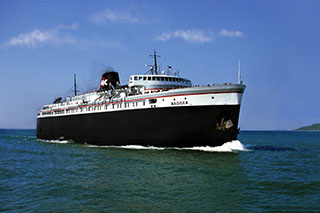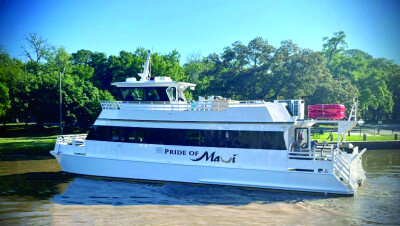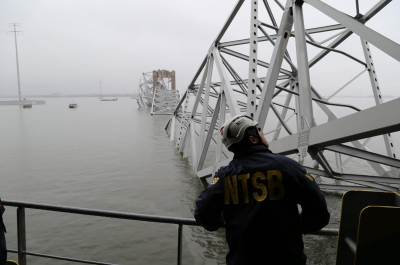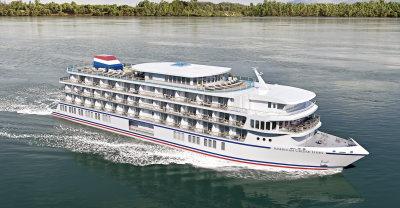The Department of the Interior has bestowed National Historic Landmark status on the Badger, the last remaining example of the Great Lakes rail/car ferry design that influenced similar designs around the world.
Built and launched in 1952, the 410’ Badger began daily service on March 21, 1953, shuttling across Lake Michigan between Ludington, Mich. and Manitowoc, Wisc. She pioneered the transport of railcars across the Great Lakes at a time when the difficulty of arranging trackage rights on roads, the distance around the southern end of the lake, and congestion in the rail yards at Chicago combined to make lake transport a more efficient and economical alternative.
By the 1970s, changing railroad economics brought an end to meaningful railroad freight business for ferries, and in 1990 the Badger left active service. The following year, entrepreneur Charles Conrad brought the ship back, reinvented to carry leisure travelers and their vehicles. The Badger is still in service today, running trips across Lake Michigan from May to October.
Pointing to the industrial changes in the U.S. since the ferry entered service, in 2012 the Badger extended her regular season in order to transport over-sized wind turbine parts for General Electric wind towers.
“The SS Badger is a unique example of American ingenuity in transportation that has been crucial to our country’s economic development over the last century,” said National Park Service Director Jonathan B. Jarvis. “As the National Park Service celebrates its centennial anniversary, we look forward to a second century of helping preserve the more than 2,500 historic places and objects like the Badger that bear the distinction of being National Historic Landmarks."
In 2014, the Badger's combustion control system was overhauled to reduce coal ash and comply with an Environmental Protection Agency mandate. Powered by two Skinner Unaflow four-cylinder marine steam engines rated 3,500 hp at 125 rpm, the Badger's propulsion system had already been designated a mechanical engineering landmark by the American Society of Mechanical Engineers.





